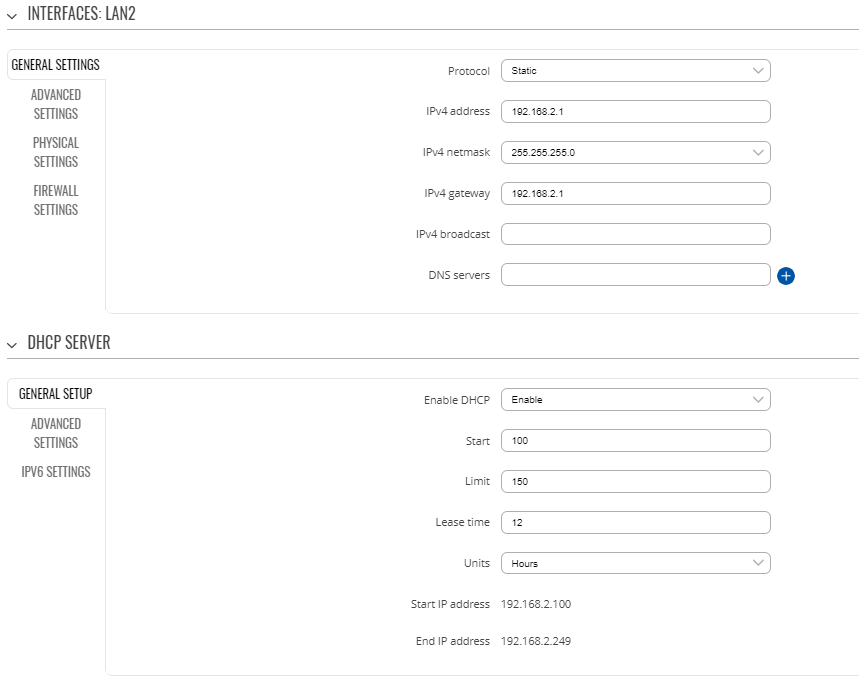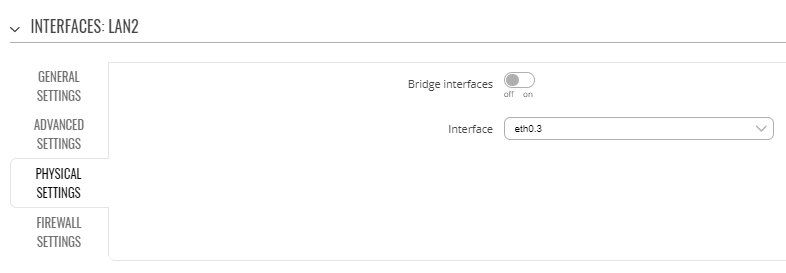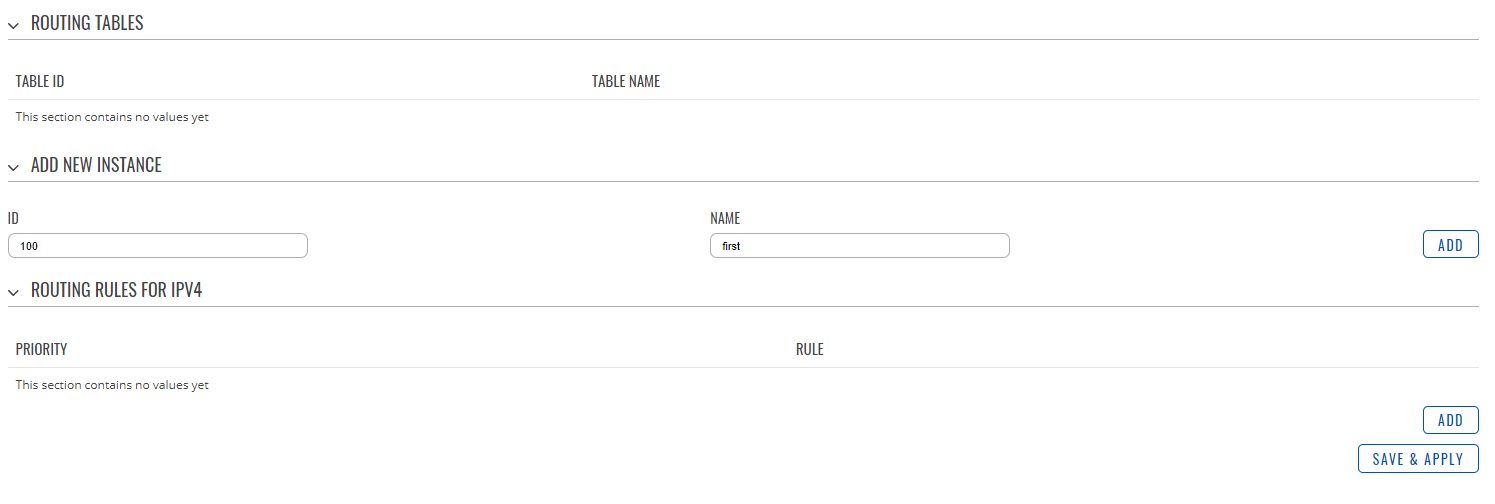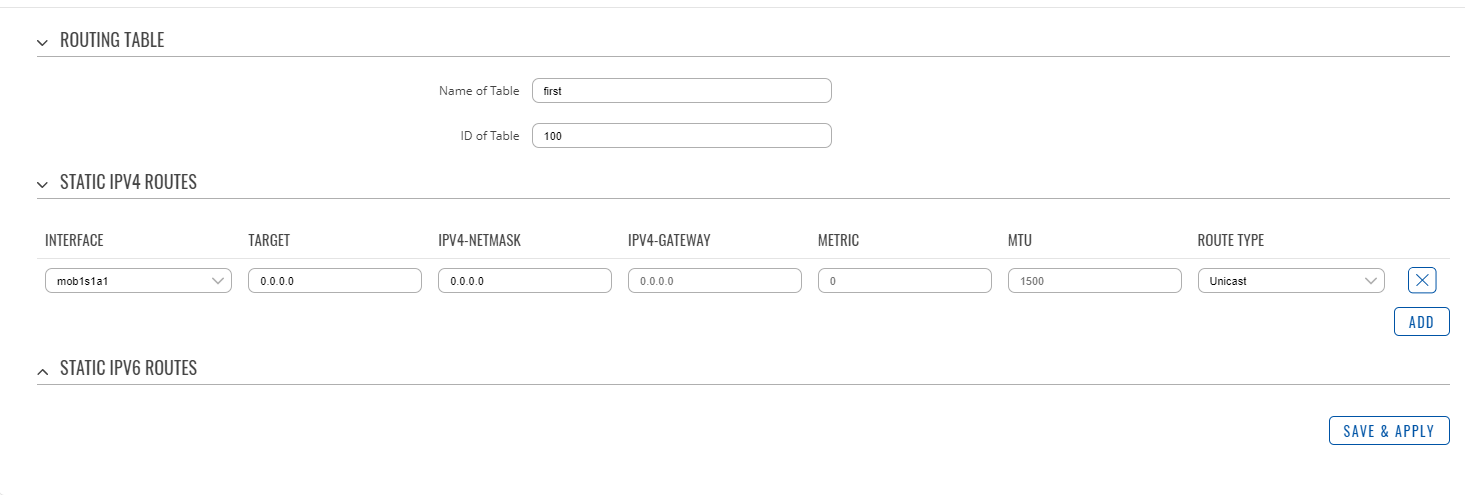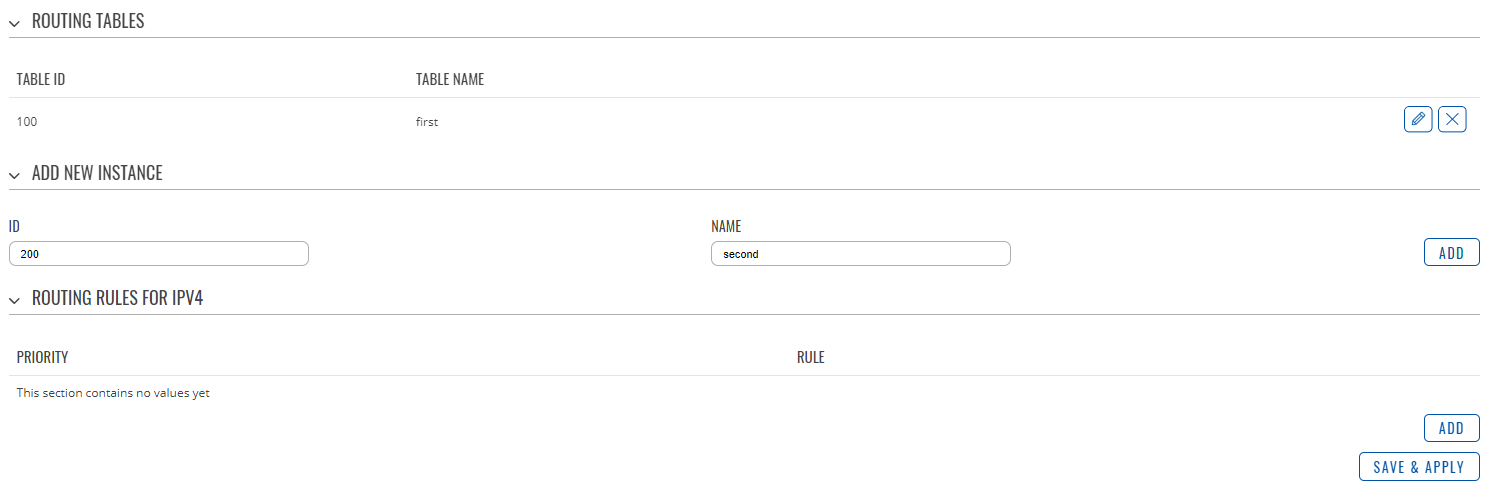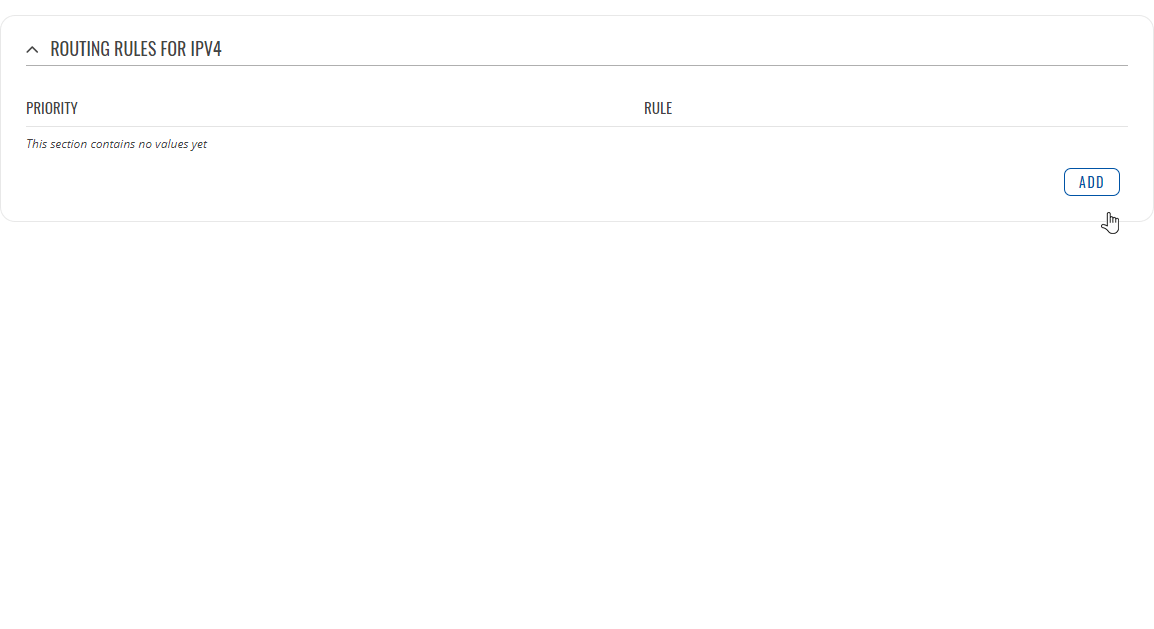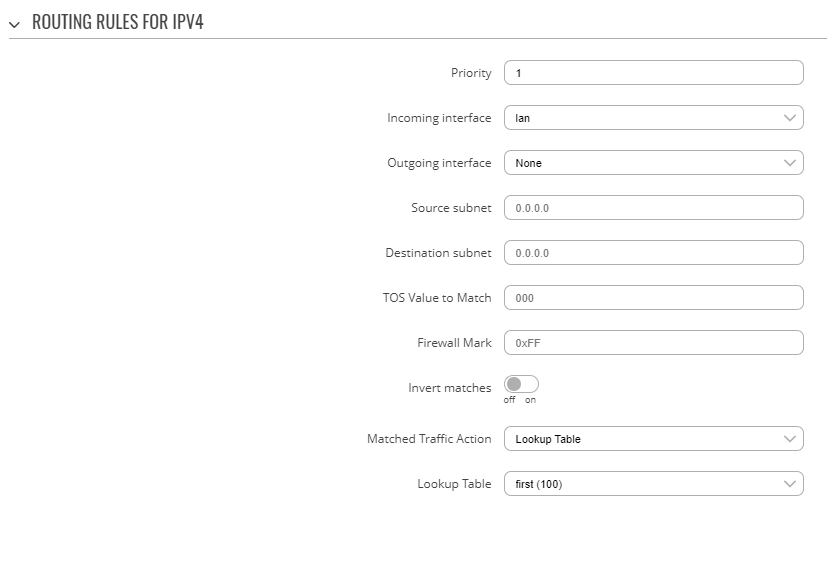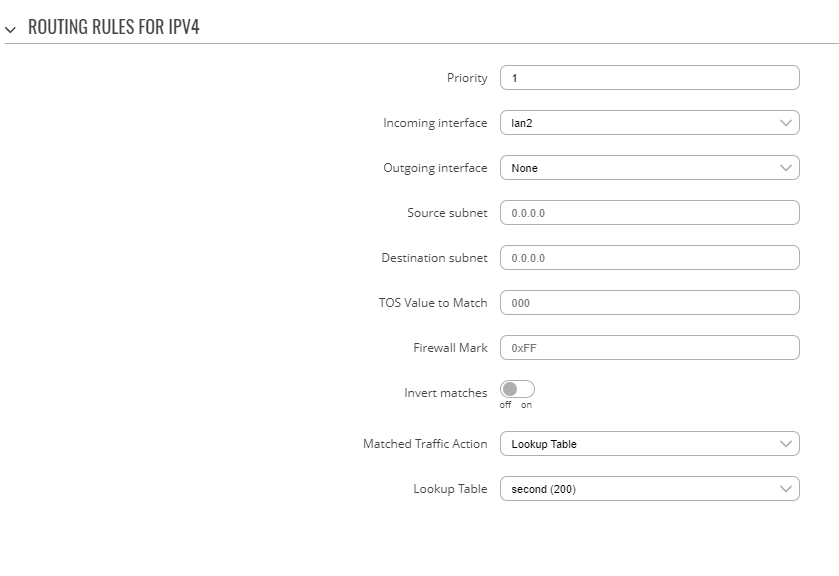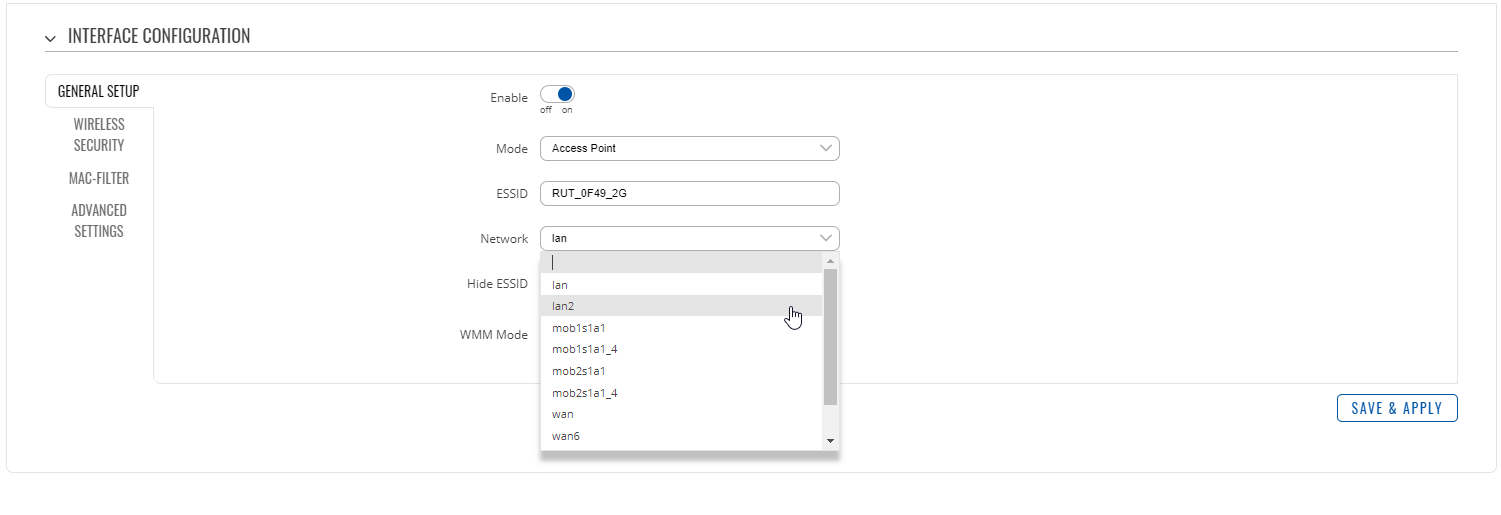Separating Mobile Data Traffic: Using First SIM Card For LAN Traffic and Second SIM Card For WLAN Traffic: Difference between revisions
Appearance
Created page with "==Introduction== This article provides a guide on how to separate mobile data traffic by using first SIM card for LAN traffic and second SIM card for WLAN traffic. These confi..." |
No edit summary |
||
| Line 6: | Line 6: | ||
[[File:Networking rutx manual webui basic advanced mode v1.gif|border|class=tlt-border]] | [[File:Networking rutx manual webui basic advanced mode v1.gif|border|class=tlt-border]] | ||
---- | ---- | ||
* Go to '''Network''' → '''VLAN''' | |||
* Go to '''VLAN''' → '''Port Based''' | |||
[[File:Port VLAN.png]] | |||
* Click '''Add''' | |||
* Leave VLAN ID as it is, for now, no need to change anything here | |||
* Go to '''Network''' → '''Interfaces''' | |||
* Under '''Add New Instance''' enter the name for your new LAN interface (we are going to use "lan2" for this example) and click '''Add''' | |||
[[File:Add int.png]] | |||
* Under the '''General Settings''' tab, set '''Protocol''' to '''Static''', and enter desired IPv4 parameters for your VLAN | |||
[[File:Interfaces lan2.png]] | |||
* Click on '''Setup DHCP Server''' to enable DHCP for your VLAN | |||
* Go to '''Physical Settings''' and click on '''Interface''', select your VLAN interface ('''N.B.''' if your '''VLAN ID is 3''', the name for your physical interface will be '''eth0.3''' and so on) | |||
[[File:Phy eth3.png]] | |||
* Go to '''Network''' → '''Routing''' → '''Advanced Static Routes''' | |||
* Under the "Add New Instance" tab, enter the ID and name for your new Routing Table, for our use, we will need 2 Routing Tables | |||
* Create a routing table with these parameters: '''ID''': 100, '''Name''': first | |||
[[File:Static route1.png]] | |||
* Click '''Add''' | |||
* In the configuration window, under the '''Static IPV4 Routes''' tab, click '''Add''' | |||
* Enter these parameters: '''Interface''': mob1s1a1, '''Target''': 0.0.0.0, '''Netmask''': 0.0.0.0 | |||
[[File:Routes 1.png]] | |||
* Leave the rest of the parameters on their default values and click '''Save & Apply''' | |||
* Create a second routing table with these parameters: '''ID''': 200, '''Name''': second | |||
[[File:Static route2.png]] | |||
* Click '''Add''' | |||
* In the configuration window, under the '''Static IPV4 Routes''' tab, click '''Add''' | |||
* Enter these parameters: '''Interface''': mob2s1a1, '''Target''': 0.0.0.0, '''Netmask''': 0.0.0.0 | |||
[[File:Routes 2.png]] | |||
* Leave the rest of the parameters on their default values and click '''Save & Apply''' | |||
* Go to '''Network''' → '''Routing''' → '''Advanced Static Routes''' → '''Routing Rules For IPV4''' | |||
[[File:Networking rutos manual routing advanced static routes routing rules for ipv4 v1 begin to edit.gif]] | |||
* Create 2 new rules with these parameters: | |||
First Rule: '''Priority:''' 1, '''Incoming interface:''' lan, '''Lookup table:''' 100 | |||
[[File:Rules 1.png]] | |||
Second Rule: '''Priority:''' 1, '''Incoming interface:''' lan2, '''Lookup table:''' 200 | |||
[[File:Rules 2.png]] | |||
* Go to '''Network''' → '''VLAN''' | |||
* Set '''Untagged''' on any LAN port you want next to VLAN ID: 3 (remove '''Untagged''' on a port next to VLAN ID: 1 accordingly) | |||
[[File:Vlan end.png]] | |||
* Go to '''Network''' → '''Wireless''' | |||
* Select your desired access point and click '''Edit''' | |||
[[File:Wifi ap edit.png]] | |||
* Click on '''Network''' and select a LAN interface which is used by VLAN ('''lan2''' in this example) | |||
[[File:Wifi vlan.png]] | |||
* Click '''Save & Apply''' | |||
Revision as of 15:07, 7 September 2021
Main Page > General Information > Configuration Examples > Router control and monitoring > Separating Mobile Data Traffic: Using First SIM Card For LAN Traffic and Second SIM Card For WLAN TrafficIntroduction
This article provides a guide on how to separate mobile data traffic by using first SIM card for LAN traffic and second SIM card for WLAN traffic. These configurations are specifically made for RUTX12.
Separating Mobile Data Traffic: Using First SIM Card For LAN Traffic and Second SIM Card for WLAN traffic
- First you want to make sure that you have ADVANCED mode enabled. This will allow you to choose from a larger variety of settings.
- Go to Network → VLAN
- Go to VLAN → Port Based
- Click Add
- Leave VLAN ID as it is, for now, no need to change anything here
- Go to Network → Interfaces
- Under Add New Instance enter the name for your new LAN interface (we are going to use "lan2" for this example) and click Add
- Under the General Settings tab, set Protocol to Static, and enter desired IPv4 parameters for your VLAN
- Click on Setup DHCP Server to enable DHCP for your VLAN
- Go to Physical Settings and click on Interface, select your VLAN interface (N.B. if your VLAN ID is 3, the name for your physical interface will be eth0.3 and so on)
- Go to Network → Routing → Advanced Static Routes
- Under the "Add New Instance" tab, enter the ID and name for your new Routing Table, for our use, we will need 2 Routing Tables
- Create a routing table with these parameters: ID: 100, Name: first
- Click Add
- In the configuration window, under the Static IPV4 Routes tab, click Add
- Enter these parameters: Interface: mob1s1a1, Target: 0.0.0.0, Netmask: 0.0.0.0
- Leave the rest of the parameters on their default values and click Save & Apply
- Create a second routing table with these parameters: ID: 200, Name: second
- Click Add
- In the configuration window, under the Static IPV4 Routes tab, click Add
- Enter these parameters: Interface: mob2s1a1, Target: 0.0.0.0, Netmask: 0.0.0.0
- Leave the rest of the parameters on their default values and click Save & Apply
- Go to Network → Routing → Advanced Static Routes → Routing Rules For IPV4
- Create 2 new rules with these parameters:
First Rule: Priority: 1, Incoming interface: lan, Lookup table: 100
Second Rule: Priority: 1, Incoming interface: lan2, Lookup table: 200
- Go to Network → VLAN
- Set Untagged on any LAN port you want next to VLAN ID: 3 (remove Untagged on a port next to VLAN ID: 1 accordingly)
- Go to Network → Wireless
- Select your desired access point and click Edit
- Click on Network and select a LAN interface which is used by VLAN (lan2 in this example)
- Click Save & Apply




